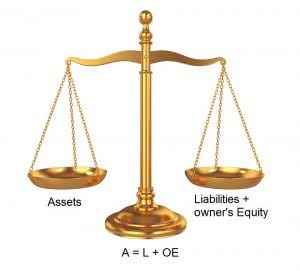
Examples include raw materials, shipping costs, commissions, and other expenses that vary with activity levels. Discover how to calculate and reduce unit costs for improved profitability and efficiency. In the final step of our exercise, the total cost of production is divided by the total quantity of units produced to arrive at an average cost of $24.00. You can do so by optimizing product sourcing, finding lower-cost manufacturers, and/or finding suppliers located closer to you. A high cost per unit means that your product pricing must be higher to accommodate desired company profits. Keeping average order value in mind, many businesses try to find ways to entice customers to spend more money in a single purchase (through bundles, discounts, and other incentives).
Variable and Fixed Unit Costs
Cross-training your workers to handle varied tasks can also reduce the dependence on a niche-skilled workforce, cutting labor costs. To begin with, you can outsource non-core tasks to specialized service providers instead of handling everything in-house. It can help cut down labor costs, space requirements, warehousing expenses, and the need for https://www.bookstime.com/ special equipment. Labor costs that differ based on location, skill level, and demand also affect your final cost per unit. Moving forward, the next section draws a comparison between the cost per unit and price per unit. In other words, it enables you to compare your product costs with industry peers, competitors, or best-in-class performers.
Average Cost Formula (Per Unit Cost)
Suppose an OEM equipment manufacturer produced a total of 25,000 parts and components in the fiscal year ending 2022. Join tens of thousands of ecommerce brands to get more articles like this and our latest resources delivered to your inbox. You omnichannel fulfillment partner that’s an extension of your brand, from unboxings to 2-day shipping. Here is how ShipBob can turn your logistics operations into a revenue driver.
Cost per unit vs. price per unit
Your team can also explore adopting lean inventory management practices and employing efficient warehouse layouts to cut storage costs. Typically, the price per unit exceeds the cost per unit to ensure profitability for the company. In that month, the company incurs fixed costs totaling $6,500, covering expenses such as rent, salaries, and insurance premiums. Improve your operational efficiency and lower your unit costs by optimizing your delivery process with eLogii. The total cost of production can be segmented into two distinct types of costs, which are differentiated by their relationship (or lack thereof) with the volume of output. Partnering with ShipBob is one of the best ways for ecommerce businesses to reduce costs by taking advantage of an international fulfillment presence and storing inventory closer to your customers.
Price per unit refers to the price for which a brand sells its products or services, whereas cost per unit refers to the average expense incurred to produce a single unit of a product or service. Pricing reflects both the cost per unit and the profit margin, and setting the right price for finished goods and services is crucial to maintaining profitability. Fixed costs are the expenses that remain constant regardless of the level of production or sales volume.

That could include automated warehouses and order fulfillment systems. This approach eliminates the need to rent or construct extra storage facilities. By maximizing warehouse space efficiency through methods such as adding shelves, organizers, and wall storage, you can optimize storage capacity. This results in reduced idle time and less wasted fuel, leading to long-term cost savings. A method to lower these costs is by leveraging eLogii to optimize delivery routes. Furthermore, precise calculations can assist in pinpointing opportunities for cost reduction.
- Neglecting external factors like economic changes and industry dynamics can result in cost-per-unit figures that don’t reflect the current business landscape.
- Partnering with a fulfillment company like Flowspace can help brands reduce their cost per unit.
- A brand would need to buy more leather to produce 1,000 pairs of ice skates compared to 100 pairs of ice skates.
- Yet, you decide to sell each cookie to customers at $2.50, which is the price per unit.
- The usual variable costs included in the calculation are labor and materials, plus the estimated increases in fixed costs (if any), such as administration, overhead, and selling expenses.
- Companies that manufacture goods will have a more clearly defined calculation of unit costs while unit costs for service companies can be somewhat vague.
Factors Affecting Cost per Unit
Inventory gets stored in proximity to areas of high demand, ensuring same-day and next-day delivery. WareIQ provides a Warehouse Management System and expertise for efficient management of inventory and warehouse processes. Also, if you know the different costing elements, you can work towards reducing the different components. If your cost of production is accurate, you can undertake SKU rationalisation and decide which products to keep and discontinue. Knowing the cost of production will let you make a well-informed decision about the markup value. By leveraging the insights and strategies outlined in this comprehensive guide, businesses can navigate the complex landscape of cost per unit analysis and drive sustainable growth.

For example, a small confectionary owner can easily distinguish between fixed costs like rent and salaries and variable costs such as flour, sugar, and labor. Then, it can divide the total costs by the number of confectionary items produced. Logistics how to calculate cost per unit form a significant component of a unit cost reduction strategy. Therefore, focusing on achieving seamless supply chain management can reduce logistics costs. First, you can work on optimizing first-mile delivery operations and related expenses.
- By comparing the actual costs incurred during production to the standard costs, businesses can assess their cost per unit and identify any variances.
- Analyzing revenues and expenses gives a clear indication of whether a company is performing and working effectively.
- Some companies may have a high amount of indirect costs which requires higher pricing to more broadly cover all of the company’s expenses.
- One-fourth of online customers return 5-15% of what they purchase, and the retail industry loses about $50 billion in the form of deadstock per year.
- Plan routes, manage drivers and stops, send timely customer notifications, collect proof of delivery and much more with just a few clicks.

